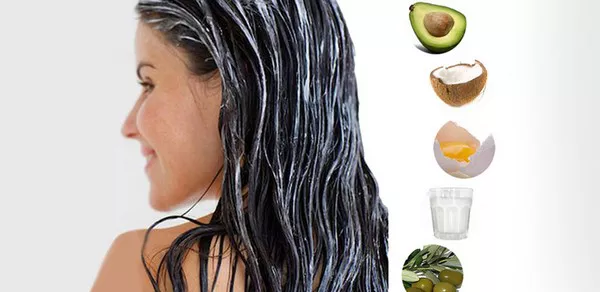Our hair is a reflection of our overall health and well-being. Unhealthy hair can be a result of various factors, such as poor nutrition, excessive heat styling, harsh chemicals, and environmental pollutants. In this article, we will explore the key signs of unhealthy hair, helping you understand when your locks may need extra care and attention.
I. Dry and Brittle Hair:
Dull Appearance:
One of the first signs of unhealthy hair is a lackluster and dull appearance. Healthy hair reflects light, giving it a natural shine. However, when the hair lacks moisture, the cuticles become rough and fail to reflect light, resulting in a dull and lifeless look.
Brittleness:
Unhealthy hair tends to be brittle and prone to breakage. Brittle hair lacks the elasticity necessary to withstand regular styling and environmental stressors. If you notice an excessive number of split ends and breakage, it may be an indication of hair that lacks moisture and proper care.
II. Excessive Hair Loss:
Increased Shedding:
While it is normal to shed around 50 to 100 hairs per day, excessive hair loss can be a sign of underlying issues. Factors such as stress, nutritional deficiencies, hormonal imbalances, and certain medical conditions can contribute to increased hair shedding.
Thinning Hair:
Hair thinning, especially around the crown and temple areas, is another sign of unhealthy hair. As the hair becomes weaker and more prone to breakage, the overall volume and density diminish, leading to visible thinning.
III. Split Ends and Frayed Hair:
Split Ends:
Split ends occur when the hair shaft becomes damaged, causing the ends to split into two or more segments. Unhealthy hair is more susceptible to split ends due to factors like excessive heat styling, chemical treatments, and lack of proper conditioning.
Frayed Hair:
Frayed hair refers to the uneven texture and rough appearance of the hair shaft. It can be caused by a combination of factors, including exposure to environmental pollutants, over-brushing, and harsh hair care products.
IV. Lack of Elasticity:
Loss of Stretch:
Healthy hair has a certain level of elasticity, allowing it to stretch and return to its original shape without breaking. Unhealthy hair lacks this elasticity and may snap or break when stretched.
Porosity Issues:
Unhealthy hair may exhibit uneven porosity, meaning that some parts of the hair absorb moisture more readily than others. This uneven porosity can lead to dry, brittle areas in the hair, making it more susceptible to damage.
V. Itchy or Irritated Scalp:
Scalp Sensitivity:
An itchy or irritated scalp is often a sign of poor scalp health, which can impact the overall health of the hair. Factors like dryness, dandruff, or product buildup can contribute to scalp sensitivity.
VI. Lack of Growth and Slow Regrowth:
Stunted Growth:
Unhealthy hair may experience stunted growth due to damage and breakage. When the hair is weak and prone to breakage, it can’t grow to its full potential.
Slow Regrowth:
If you notice that your hair takes a long time to grow back after being cut or experiencing hair loss, it may be an indication of unhealthy hair. Proper hair care, including a balanced diet and gentle hair practices, is essential for promoting healthy regrowth.
VII. Excessive Oiliness or Dryness:
Oily Scalp:
An excessively oily scalp can lead to greasy hair, which can be challenging to manage. Overactive sebaceous glands can cause the hair to become weighed down and appear flat.
Dry Hair:
Conversely, hair that lacks moisture can become dry and brittle. A lack of natural oils can cause the hair to lose its shine and become more prone to breakage.
VIII. Lack of Manageability:
Tangled and Difficult to Style:
Unhealthy hair can become tangled and difficult to manage. Tangles and knots are often a result of damaged cuticles and rough hair shafts.
IX. Faded or Uneven Hair Color:
Color Fading:
Unhealthy hair can cause hair color to fade more quickly than usual. The lack of moisture and damaged cuticles can lead to color molecules being released from the hair shaft.
Uneven Color:
Additionally, unhealthy hair may result in uneven color distribution, with some areas of the hair appearing dull or lackluster.
Conclusion:
Healthy hair is a reflection of overall well-being and requires proper care and attention. By recognizing the signs of unhealthy hair, such as dryness, brittleness, excessive hair loss, split ends, lack of elasticity, scalp issues, slow regrowth, and manageability problems, you can take the necessary steps to address the underlying issues and improve your hair’s health. Regular trims, gentle hair care practices, a balanced diet, and the use of nourishing hair products are essential for maintaining lustrous and resilient locks. Remember that each person’s hair is unique, and it’s essential to tailor your hair care routine to meet your hair’s specific needs. With patience, dedication, and proper care, you can transform your hair into a healthy and radiant crowning glory.

